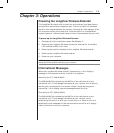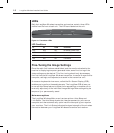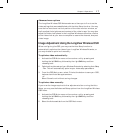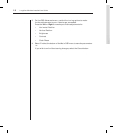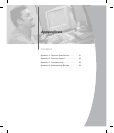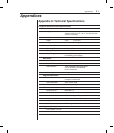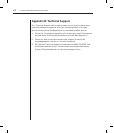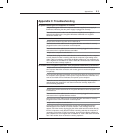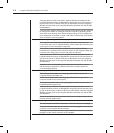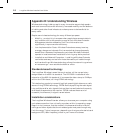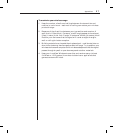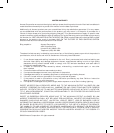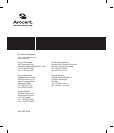
26 LongView Wireless Installer/User Guide
Appendix D: Understanding Wireless
Wireless technology is being used in many innovative ways to help people
work and communicate more efficiently. Increased mobility and the absence
of cabling and other fixed infrastructure have proven to be beneficial for
many users.
People use wireless technology for many different purposes:
• Mobility – productivity increases when people have access to data in
any location within the operating range of their Wireless Extender.
Management decisions based on real-time information can
signifi cantly improve worker effi ciency.
• Low Implementation Costs – Wireless Extenders are easy to set up,
manage, change and relocate. Environments that change frequently
benefi t from the ease of implementing wireless. Wireless Extenders
operate in locations where installation of wiring may be impractical.
• Installation and Network Expansion – installing a Wireless Extender
can be fast and easy and can eliminate the need to pull cable through
walls and ceilings. Wireless technology allows the network to go where
wires cannot go – even outside the home or offi ce.
Standards-based technology
The LongView Wireless transmitter and receiver utilize a proprietary
design based on the 802.11a standard. The IEEE 802.11a standard is an
extension of the 802.11b standard. It increases the data rate up to 54 Mbps
within the 5 GHz band, utilizing OFDM technology.
This technology works by transmitting high-speed digital data over a radio
wave utilizing OFDM technology. OFDM works by splitting the radio signal
into multiple smaller sub-signals that are then transmitted simultaneously
at different frequencies to the receiver. OFDM reduces the amount of
crosstalk (interference) in signal transmissions.
Installation considerations
The LongView Wireless Extender allows you to access your computer using
a wireless connection from virtually anywhere within its operating range.
Keep in mind, however, that the number, thickness and location of walls,
ceilings and other objects that the wireless signals must pass through may
limit the range. Typical ranges vary depending on the types of materials and
background RF (radio frequency) noise in your home or business.



